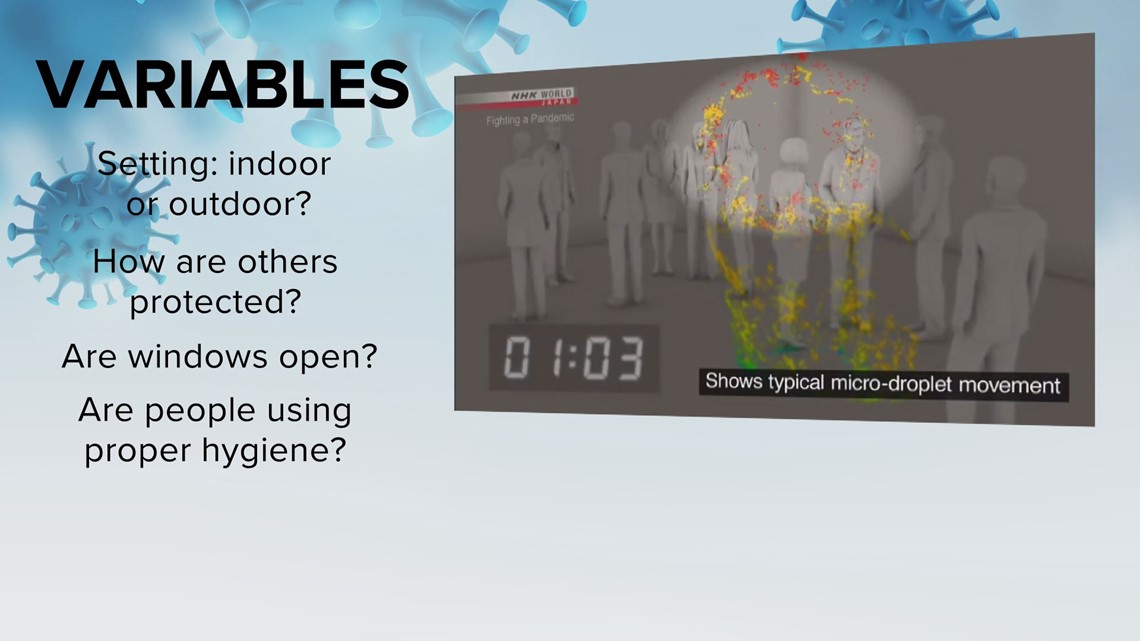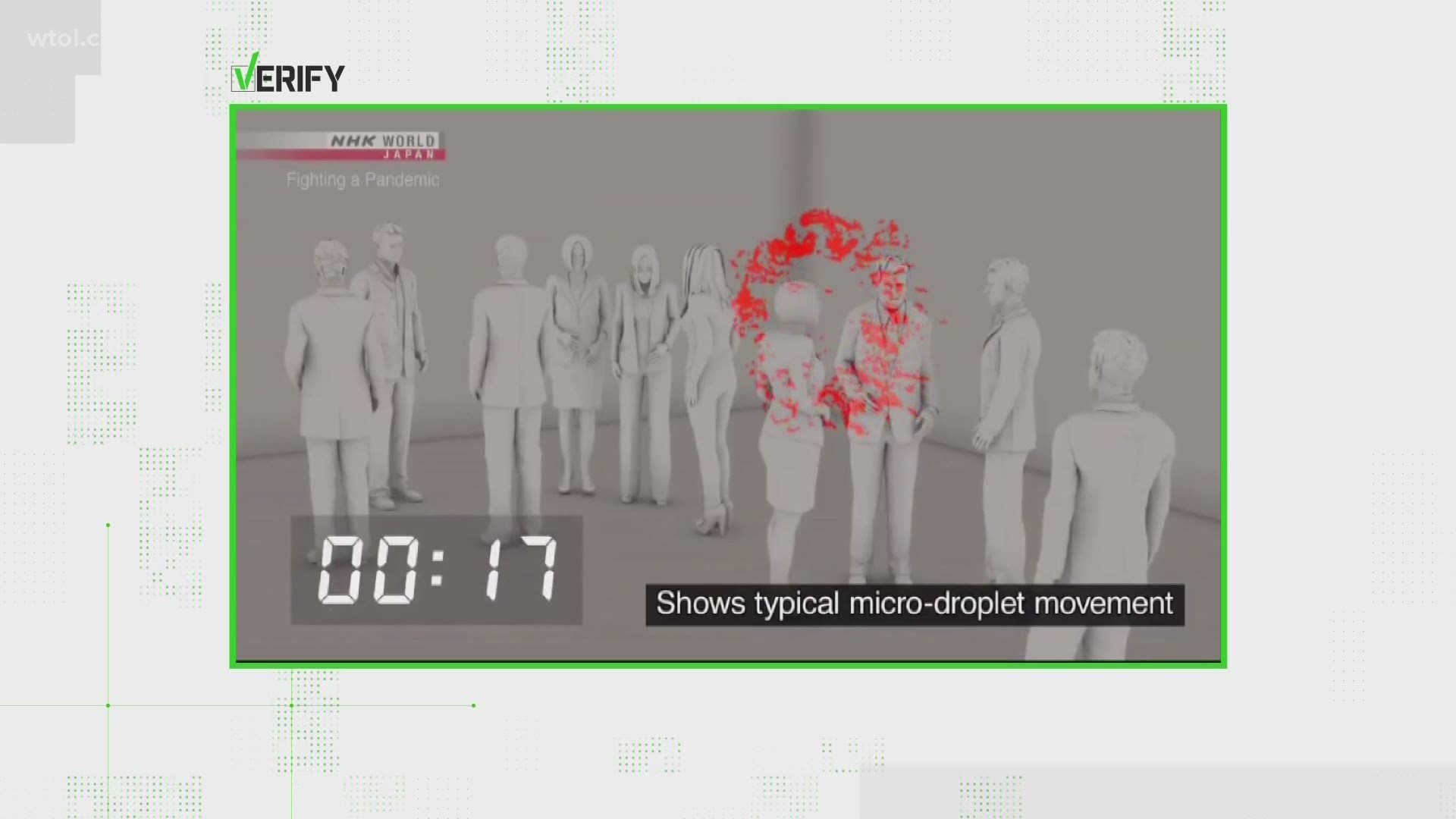TOLEDO, Ohio — An invisible enemy like the coronavirus can often be hard to visualize. That's why you've likely seen some simulation videos online showing how the virus can spread and linger.
The video below, in particular, shows how microdroplets can linger in a room for at least 20 minutes. ProMedica Dr. Brian Kaminski says the visual representation is exactly why it's helpful information.
"The nice thing about simulations is that they provide a visual," Kaminski said. "The virus is invisible to us on a daily basis and being able to see that visual helps connect a little bit better and helps us understand how this virus spreads from person to person."
But these simulations aren't perfect for several reasons. First: they're just simulations, not real-life occurrences. Also, keep in mind: this is accurate for exactly one situation. Change one simple variable and it could look a whole lot different.


"They are limited, though, because they discount a number of other variables," Kaminski explained. "The setting: is this indoors? Is this outdoors? What type of protection are people wearing? Is the window open or not open? And then there are many other variables that we simply can't account for. Are people using normal hygiene?"
So we can VERIFY: simulation videos showing how COVID-19 spreads are accurate for those particular simulated events. We can also VERIFY that these videos are limited because of a number of factors they don't consider. But all in all, they're helpful tools to better understand an invisible nemesis.

